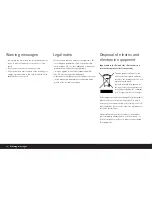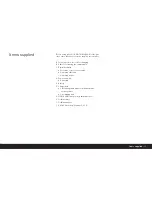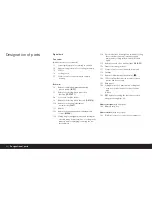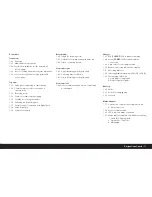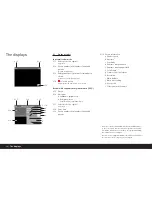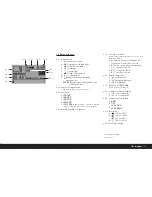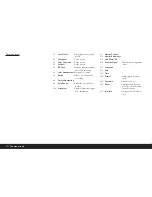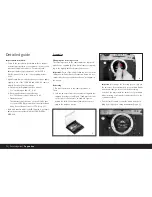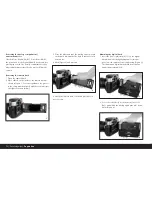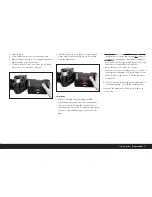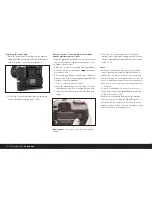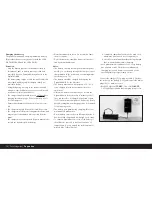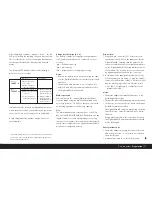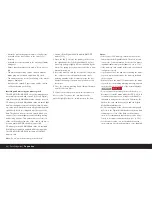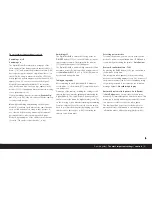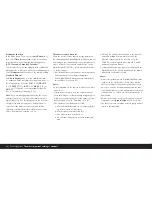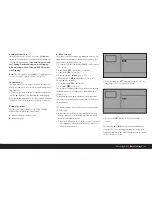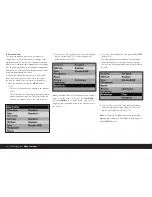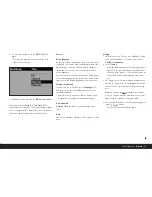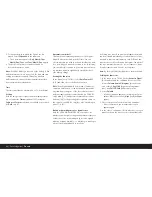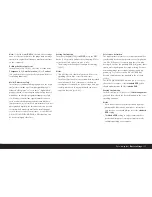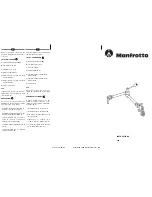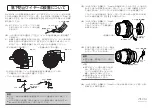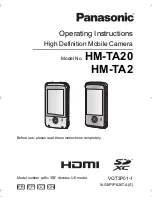
78 / Detailed guide /
Preparation
Charging the battery
The powerful and quick-charging lithium ion battery
(E) provides the necessary power for both the LEICA
DIGITAL-MODUL-R and the LEICA R8/R9.
Attention:
• Only the battery type specified and described in
this manual, and/or battery types specified and
described by Leica Camera AG, may be used in the
Digital-Modul-R.
• The battery may only be used in the unit for which it
is designed and may only be charged exactly as
described below.
• Using the battery contrary to the instructions and
using non-specified battery types can result in explo-
sion under certain circumstances.
• The charger supplied should be used exclusively for
charging this battery type. Do not attempt to use it
for other purposes.
• Ensure that the mains outlet used is freely accessi-
ble.
• The charger may only be used in closed, dry rooms.
• The charger must be protected against moisture, and
may only be cleaned when disconnected from the
mains.
• The charger may not be opened. Repairs may only be
carried out by authorized workshops.
• Never throw batteries into a fire as this can cause
them to explode.
• Defective batteries should be disposed of as speci-
fied by their manufacturer.
Notes:
• The battery can only be charged outside the power
unit (D), i.e. exclusively through the charger. It is not
charged when in the power unit, even during mains
operation (see p. 79).
• The battery should be charged before using the
Digital-Modul-R for the first time.
• The battery must have a temperature of 0°–35°C
to be charged (otherwise the charger does not
switch on).
• Lithium ion batteries such as the one used in the
Digital-Modul-R do not develop a “memory effect”.
They can therefore be charged at any time, regard-
less of their current charge level. If a battery is only
partly discharged when charging starts, it is charged
to full capacity faster.
• The battery gets warm during charging. This is nor-
mal and not a malfunction.
• A new battery only reaches its full capacity after it
has been fully charged and discharged 2 or 3 times.
• To ensure a maximum service life of the battery, it
should not be exposed to constant extremes of
temperature (e.g. in a parked car in the summer or
winter). Also, it should not be
a. completely charged unless it is to be used soon
afterwards (can cause a loss of capacity) or
b. stored for several months without being charged
(due to unavoidable slow discharging)
• Even with optimum conditions of use, every battery
has a limited service life! After several hundred
charging cycles, this becomes noticeable as the
operating times get significantly shorter.
Connect the charger (C), i.e. plug its cable (1.50) into
the socket on the battery (1.55) and connect the mains
plug (1.52) to a mains socket.
• Both LEDs (green/
POWER
, 1.48; red/
CHARGE
,
1.47) light up to indicate that charging is in process.

